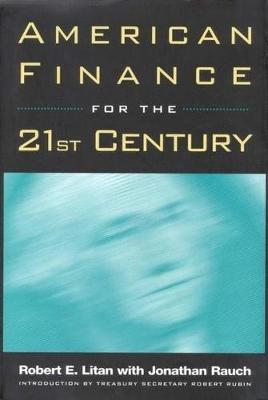As recently as thirty years ago, Americans lived in a financial world that today seems distant. Investment and borrowing choices were meager: virtually all transactions were conducted in cash or by check. The financial services industry was heavily regulated, as an outgrowth of the Depression, while an elaborate safety net was constructed to prevent a repeat of that dismal episode in American history.
Today, consumers and businesses have a dizzying array of choices about where to invest and borrow. Plastic credit cards and electronic transfers increasingly are replacing cash and checks. Much regulation has been dismantled, although the industry remains fragmented by rules that continue to separate banks from other enterprises. Meanwhile, finance has gone global and increasingly high-tech.
This book, originally prepared as a report to Congress by the Treasury Department, outlines a framework for setting policy toward the financial services industry in the coming decades. The authors, who worked closely with senior Treasury officials in developing their recommendations, identify three core principles that lie at the heart of that framework: an enhanced role for competition; a shift in emphasis from preventing failures of financial institutions at all cost toward containing the damage of any failures that inevitably occur in a competitive market; and a greater reliance on more targeted interventions to achieve policy goals rather than broad measures, such as flat prohibitions on certain activities.
- ISBN13 9780815752882
- Publish Date 30 April 1998
- Publish Status Active
- Out of Print 2 August 2023
- Publish Country US
- Imprint Brookings Institution
- Format Hardcover
- Pages 211
- Language English
